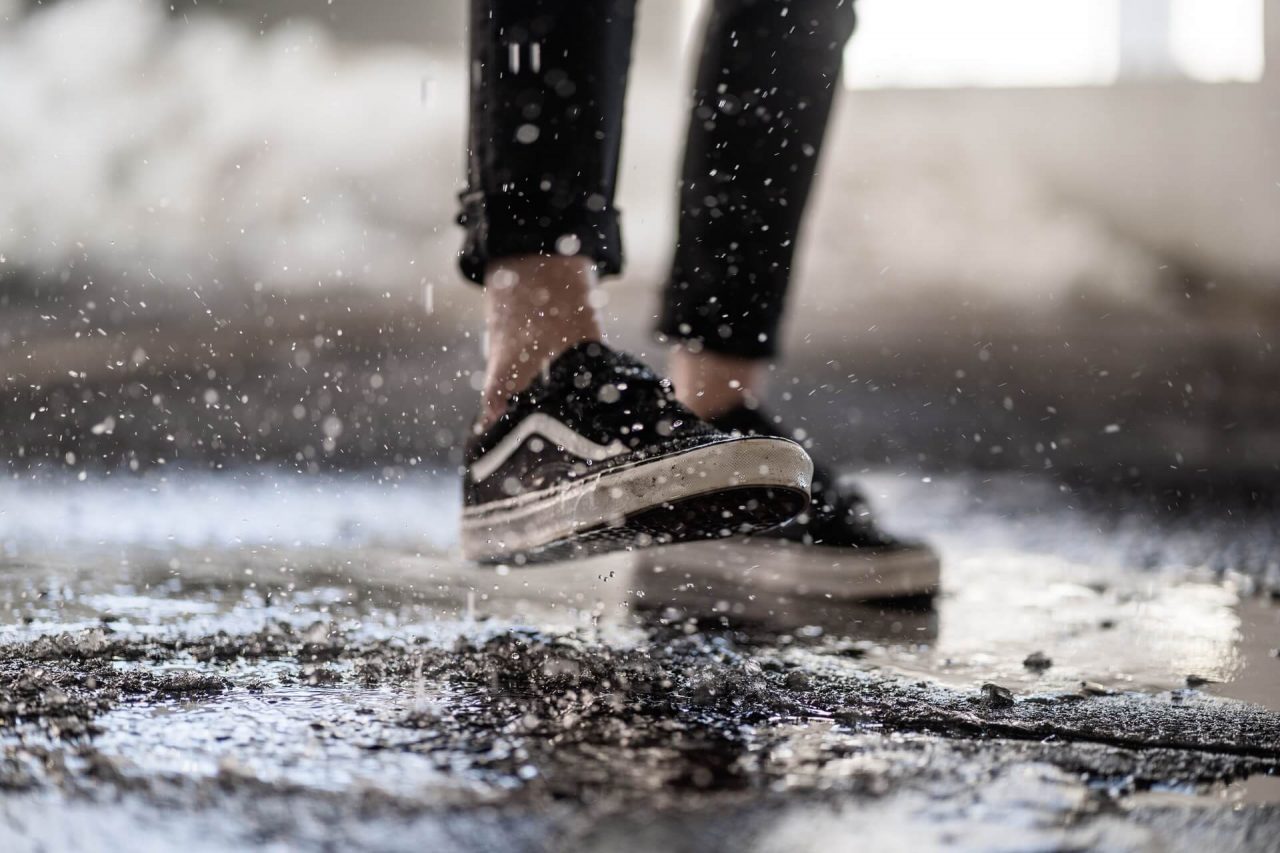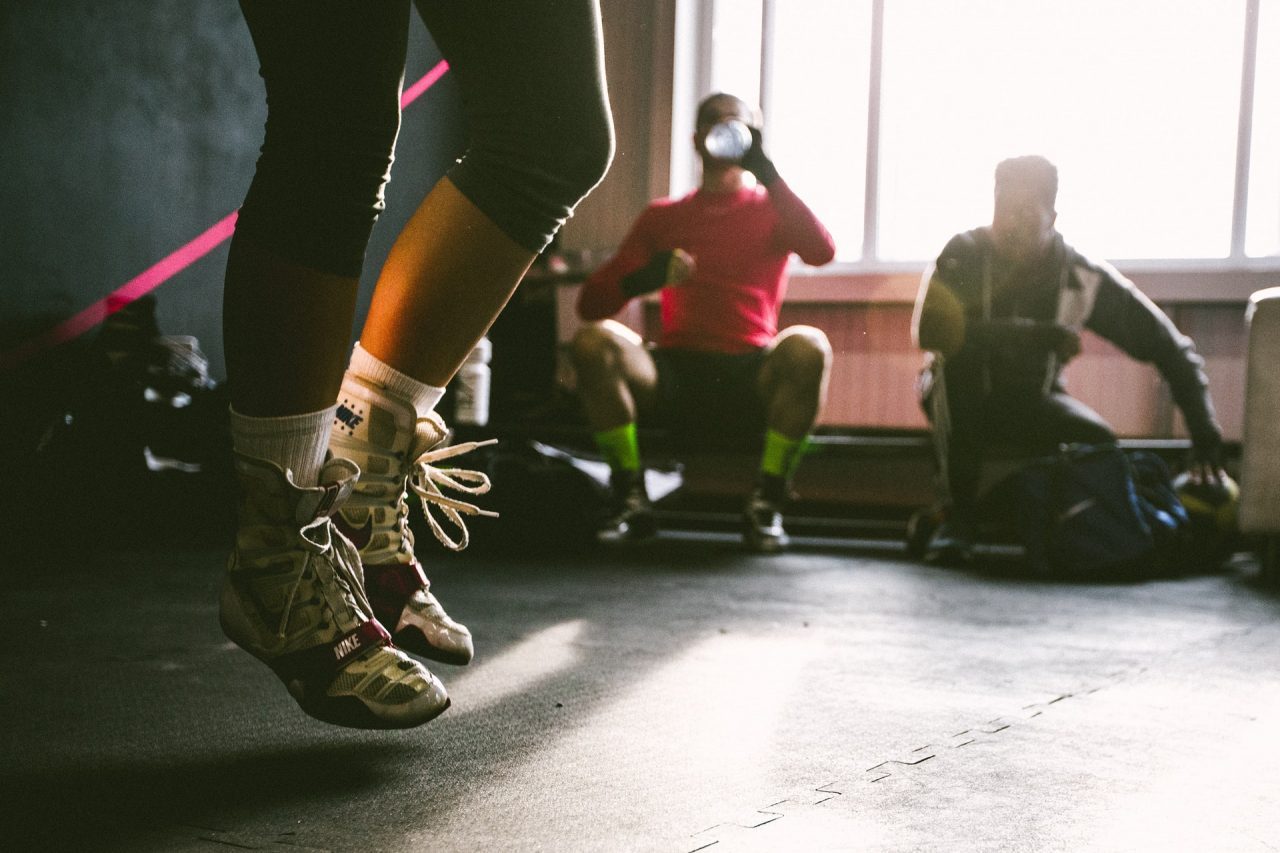We have to admit, the idea of using one pair of running shoes for all types of terrains sounds quite convenient. That would save us all a couple of bucks and effort on researching the shoes we need, and for a minimalist runner, too, it would be the dream. While that is possible to some extent, different surfaces on which we run affect the feet differently, therefore we need shoes that support the feet in rougher terrains and ones that offer traction in softer ones.
So you might ask, how can one tell the difference between different types of running shoes, especially
between off-road and road running ones. Here are some of the things that characterize each, so you can make a side-by-side comparison of trail running shoes vs running shoes.
What Are Trail Running Shoes?
Since trail running shoes are designated shoes for trails, we think it is best to define this type of terrain first. What are trails in the first place? Where do trails start and where do they end?
Trails are any type of path or track that lays on natural ground. It could be a park nearby, a hill, a mountainous region, a forest, you can run in grass, sand, mud, snow, you name it. Basically any off-road, natural running path can be a trail that you can run in. They can vary in difficulty; some are technical, steep, and with many obstacles, while others such as flat surfaces covered in grass are typically easier.
With this definition in mind, we can now see what differentiates trails from roads. Consequently, it is easier to understand why trail shoes are often necessary to tackle these surfaces. Let’s have a look at what characterizes trail footwear.
Trail running shoe features
Knowing that trails can be uneven and unpredictable surfaces, different from flat, paved roads of asphalt or concrete, shoes made for trails should then be supportive for these running conditions. They should have features appropriate for the environment, with an emphasis on extra grip, support, and stability. If you are running on technical trails and in harsher weather conditions, it is also crucial that your shoes are durable and are made of thicker material.
Outsoles
One evident difference between trail running and running shoes for the road lies in their outsoles. The outsoles of trail shoes are typically thicker and stiffer; they have softer lugs but which can also vary depending on whether you are running on mud, snow, or rocky terrain. The purpose of deeper outsoles is to improve traction and grip, especially on slippery ground.
Midsoles
Due to the uneven surfaces, the platform of trail shoes should provide stability, which is why they are characterized by a stiffer midsole as well. These can often include rock plates, which are hard plastic inserts to protect the feet from sharp objects and irregularly shaped rocks.
Uppers
For additional protection from rocks, roots, and other obstacles, trail shoes have reinforced uppers, made from special fabrics that endure harsh conditions and are less prone to tears and rips. Often, you will find trail shoes with waterproof uppers as well, to protect the feet when running in a wet environment or during rainy or snowy weather.
What Are Road Running Shoes?
Roads, in comparison to the wilder terrains of trails, are generally more accessible and consequently more frequented by runners. Due to the popularity of running on the road, this type of shoe is what we often associate with running shoes in general. Road running is also associated with famous long-distance races and events such as the marathon and half-marathon. On top of that, this terrain is both beginner-friendly and challenging; the flat surfaces of roads are great for keeping a stable pace and training speed.
While roads don’t usually have the obstacles you find on trails (branches, roots, rocks), their hard surfaces of asphalt and concrete can be strenuous to the feet and joints. This is where road running shoes make their entrance as a lighter weight shoe, designed to support the feet and reduce the impact loading (shock of the feet when they land) caused by the flat surface.
Road running shoe features
For reduced impact and more agility, the ideal road running shoe combines a good level of cushioning for joint support and lightweight materials for unrestricted movement. Let’s take a look at the typical anatomy of a road running shoe to see what characterizes and differentiates this shoe from trail running shoes.
Outsoles
In comparison to off-road shoes, road running shoes usually have flatter and smoother outsoles. To endure the impact, they are made of durable material such as carbon rubber, air-injected rubber, or a combination of both. The heel-to-toe drop, which is the difference in the height of material under the heel and that under the forefoot, is often higher in this shoe type, in order to protect the joints. The outsoles can also have flex grooves designed to offer traction and help the shoe roll forward with ease.
Midsoles
Road running shoes differ from trail shoes when it comes to the midsole as well. Different from the stiff midsoles of trail running shoes, shoes for the road usually have a soft midsole, with a good amount of cushion to help with shock absorption. Most shoe manufacturers utilize foam technology, for a softer feel and a more comfortable run.
Uppers
The uppers of running shoes for the road are usually quite light and thin and they do not need to be reinforced as in the case of trail shoes. Although lighter, this part should still be robust, comfortable, stretchy, and supportive. Breathability is also crucial since road shoes are often used for longer distances, which means feet will eventually get sweaty and will need proper circulation. Mesh materials used for breathability can impact the shoe’s ability for weather protection, but many road shoes’ models offer waterproof options as well.
Should You Wear Trail Running Shoes on Road and Vice Versa?
If you’ve ever had a favorite pair of running shoes, at some point you’ve probably found yourself wearing them at all times and everywhere. Admittedly, once you find that perfect fit, it’s hard to switch to something else, even if that other option would be more appropriate for that terrain. But can you use trail running shoes on pavement and vice versa?
Trail running shoes on the road
When it comes to off-road shoes, they are generally safe and not so uncomfortable to wear even when running on the road. However, if you will be running for longer distances, the harsh surface of the road can damage and wear out the soles of trail running shoes much more quickly than it would wear out a shoe designated for the road.
Your feet and joints will also lack the support that the softer midsole of road running shoes offers, unless the trail shoe you will be wearing is highly cushioned.
Trail shoes can, however, come to the rescue when it comes to snow-covered or frozen roads. During the winter months, they can be a great alternative to road running shoes if you are looking for something with more traction.
Road running shoes on the trail
Road running shoes can be quite versatile when it comes to their features, hence they can offer enough traction for some easy to moderate trails. A good rule of thumb for when to use this kind of shoe on trails is to evaluate if the surface of the trail resembles the road. Some road shoes can offer enough traction and responsiveness for trails, however, most road shoes will not perform well on technical and steep terrain.
In wet and slippery ground conditions, road running shoes will typically not offer enough traction. Their lightweight design and thin uppers are also not suitable for terrains in which you face a lot of obstacles, which could lead to a greater chance of injury.
Whether you choose trail shoe or a different type, it ultimately comes down to support and what you feel works best for your feet and running form. When choosing a new running shoe, think of which terrain you plan to run on most often, or check for a shoe that is on the neutral side and which you can use both on the roads and moderate trails.





